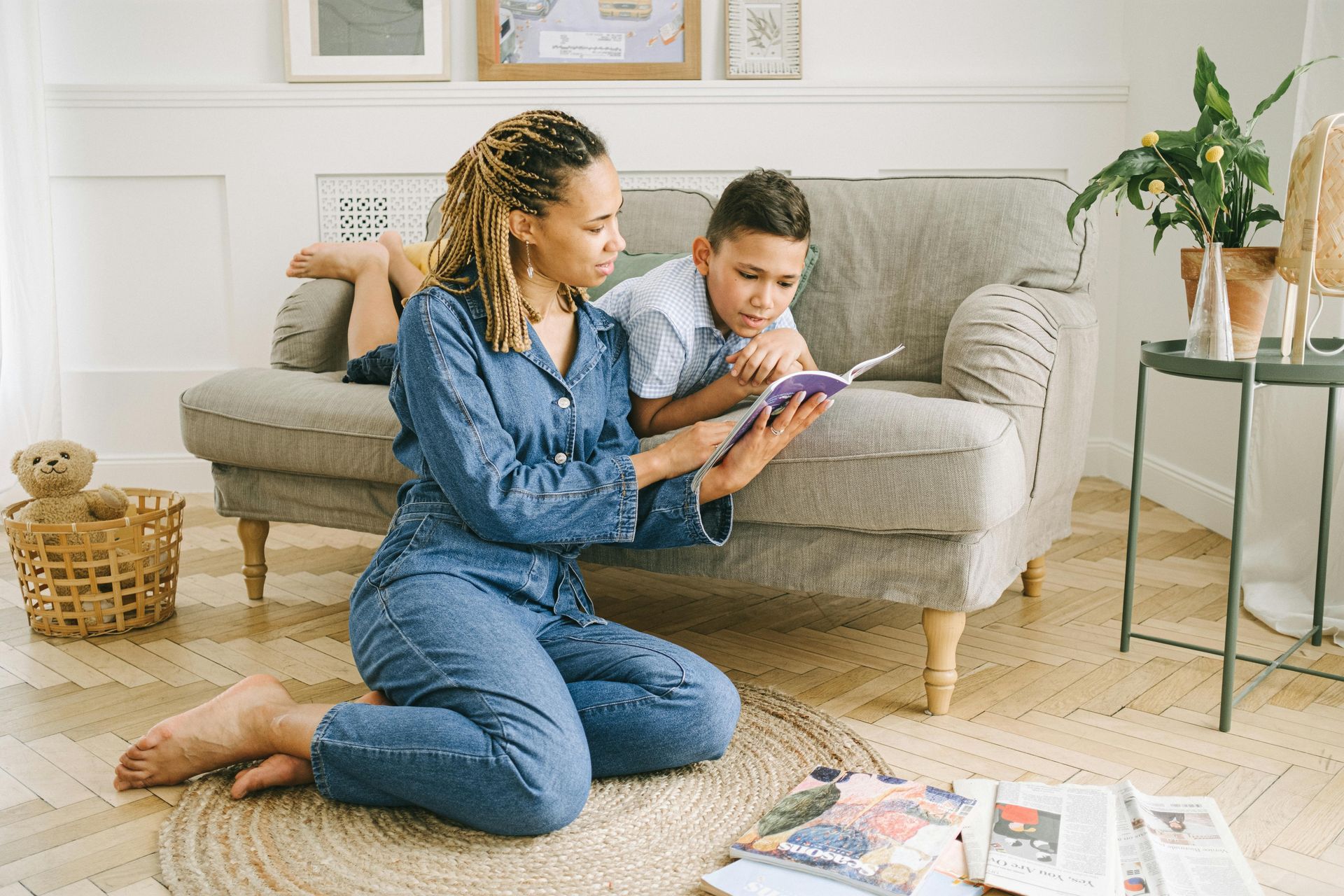Blog
The Power of Repeated Reading
Anne Hauth • September 23, 2025
Reading fluency is a crucial skill that bridges the gap between decoding words and understanding their meaning. One effective strategy to build fluency is repeated reading—a technique where a student reads the same text multiple times until they achieve a level of fluency that feels natural and confident.
What Is Repeated Reading?
Repeated reading involves selecting a short passage at an appropriate reading level—ideally at or slightly above the student's instructional level. The student reads this passage several times, focusing on improving speed, accuracy, and expression with each reading. This practice allows for mastery of the text, leading to fluent and confident reading. Fluent reading should sound like conversational speaking—natural and expressive.
Why Does It Work?
Research shows* that repeated reading can lead to significant improvements in reading performance. The benefits include:
- Improved Word Recognition: By encountering the same words repeatedly, students become more familiar with them, leading to quicker and more accurate recognition. When these words become automatic, the students no longer need to put effort into decoding them.
- Increased Reading Fluency: Reading the same passage multiple times allows students to build fluency--each time reading it more smoothly and with greater expression.
- Enhanced Comprehension: As fluency improves, students can focus more on understanding the text, leading to better comprehension. This improvement in comprehension extends to unpracticed passages as well.
- Increased Confidence: Repeated reading is a form of mastery learning. Many beginning or struggling readers don't often get the opportunity to hear themselves sounding like fluent readers. After reading a passage multiple times, they've mastered it--and they sound great! This is a huge confidence boost that motivates them to keep reading.
Repeated Reading at Home
Incorporating the repeated reading strategy into your child's home reading routine doesn't have to be complicated or boring. In fact, many kids already do it! You've probably noticed that they often want to read the same book over and over. Don't discourage this--as long as they haven't totally memorized the entire text, they're building skills each time they read it.
To work on repeated reading with your child at home, here's a simple strategy:
- Use an Appropriate Passage: Have your child choose a new short text that is slightly challenging but still within their level.
- Listen to Your Child Read: Have your child read the passage aloud to you. Note any words that are difficult for them to decode.
- Read Aloud Together: Read the passage aloud with your child, modeling fluent reading. Do this one to three times. Identify the difficult words together, and provide definitions.
- Independent Practice: Encourage your child to read the passage independently a few more times, focusing on improving their expression with each reading.
- Celebrate Progress: Affirm how much your child improved from the first reading to the final reading. Acknowledge their hard work and progress to build confidence and motivation.
Additional Tips
- Keep Sessions Short: Aim for 10- to 15-minute sessions at first, to maintain focus and prevent frustration.
- Consider Using a Timer: If your child is open to the idea, set a timer each time they read the passage. Note their improvement in time, and celebrate their fluency growth. Make the timing element a fun challenge, but emphasize that this exercise isn't about speed reading—it's about building fluency.
Repeated reading is a powerful strategy that can significantly enhance your child's reading ability. If you're looking for an easy-to-use program that incorporates this research-proven strategy, check out One Minute Reader. This program uses repeated reading and gamified learning to help kids at various reading levels build fluency, vocabulary, comprehension, and confidence.
* Dowhower, S. L. (1987). Effects of repeated reading on second-grade transitional readers’ fluency
and comprehension. Reading Research Quarterly, 22(4), 389–405.
Kuhn, M. R., & Stahl, S. A. (2003). Fluency: A review of developmental and remedial practices.
Journal of Educational Psychology, 95(1), 3–21.
LaBerge, D., & Samuels, S. J. (1974). Toward a theory of automatic information processing in
reading. Cognitive Psychology, 6(2), 292–323.
Highlighted Posts

Regardless of where kids are on their reading journey, there are countless ways to incorporate reading into cozy days at home this winter. Here are some easy ideas for kids to try at home over winter break and beyond! Have kids think of the trusted friends, family members, or adults in their lives who can read, and encourage them to read aloud with these people as often as possible. Depending on their reading ability, they can simply listen to a book read aloud, or they can take turns reading and being read to. Have the kids fill out this Read-Aloud Log every time someone reads to them or every time they read to someone. You could offer a small reward for completing this activity every day of winter break (or every day during a predetermined time period). Reading aloud to their pets, stuffed animals, or even to themselves counts too! Set up reading challenges in which kids set goals and record their minutes spent reading or the number of books they read. Have kids color and decorate these winter-themed bookmarks to make reading even more fun. Encourage kids to borrow books from the library and have a big pile to choose from on cozy winter days. See this Cozy Wintertime Book List for book ideas. Refer to our 7 Ways to Create a Cozy Reading Environment document to create an ideal reading space. Lend or gift kids the first book in a series that’s likely to hook them. Sometimes all it takes is the right series to turn a reluctant reader into a bookworm! Incorporate reading time into other fun activities. For example, while making dinner or baking holiday treats, kids can read the recipes and write out the grocery lists. Create a snowflake book wall. Print out this Snowflake Wall Template , and have kids fill out a snowflake each time they finish a book. Then, have them tape the snowflake to the wall. Encourage kids to find ways to read while playing favorite games or while spending time on electronic devices. While playing games, have them read the game instructions aloud. While watching shows, have them turn on and read the subtitles. Have kids practice reading and writing while completing this fun Winter Scavenger Hunt . They’ll get some fresh air too! Refer to this Send Some Cheer printable for addresses to places where kids can send letters. Have them practice their writing skills and spread kindness by writing to kids in hospitals, senior citizens, refugee children, and more. Set up daily One Minute Reader time, and see literacy progress in just minutes! This research-proven, parent-trusted program is free for 7 days and just $8/month after that. Your kids will have so much fun beating their goals, they won't want to stop. Download the Splat-o-Nym vocabulary iPad app , which keeps kids entertained while boosting their vocabulary. Kids can try a free version of this game and purchase to get the full experience. Note that this app is only available for iPads, not smartphones or other devices. Add your own ideas to this list! Our hope is for all kids to experience the joy of reading this winter season and always.
Ready to see an improvement in your child's reading?
Sign up today and get seven days for FREE.
One Minute Reader is just $8 per month after your free trial.

